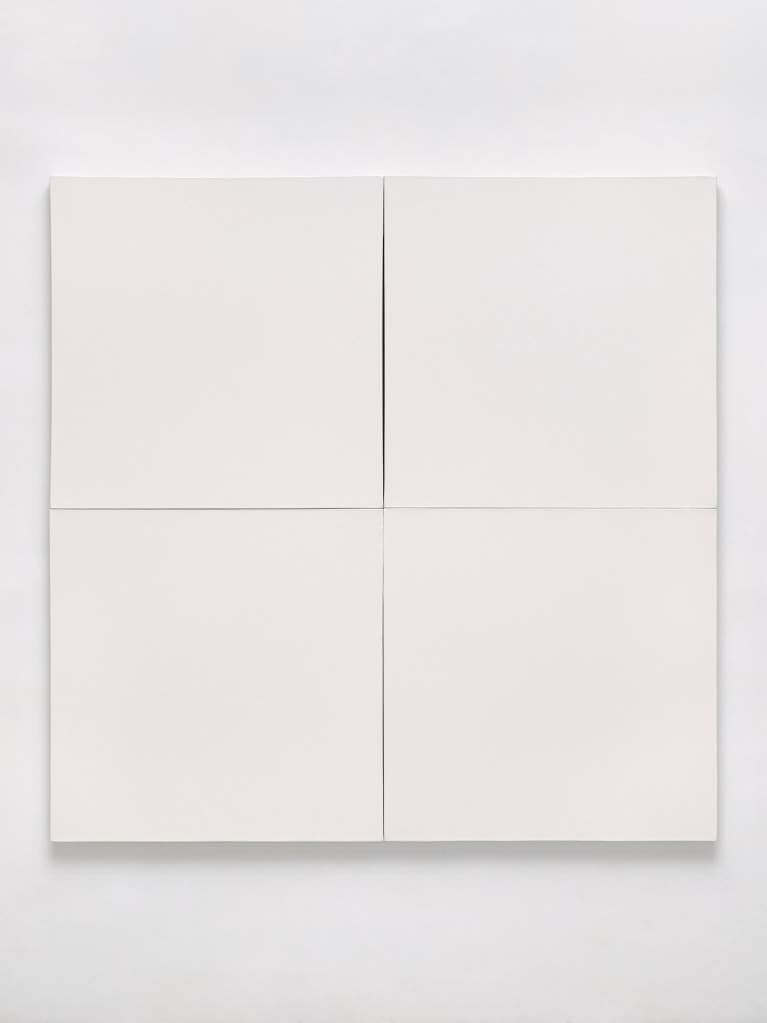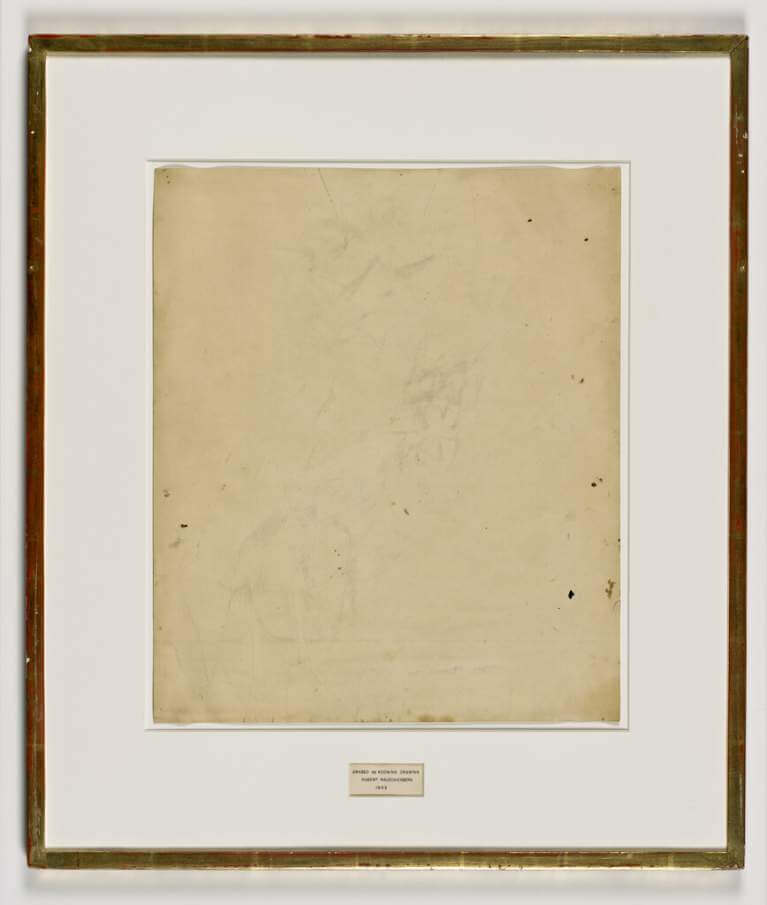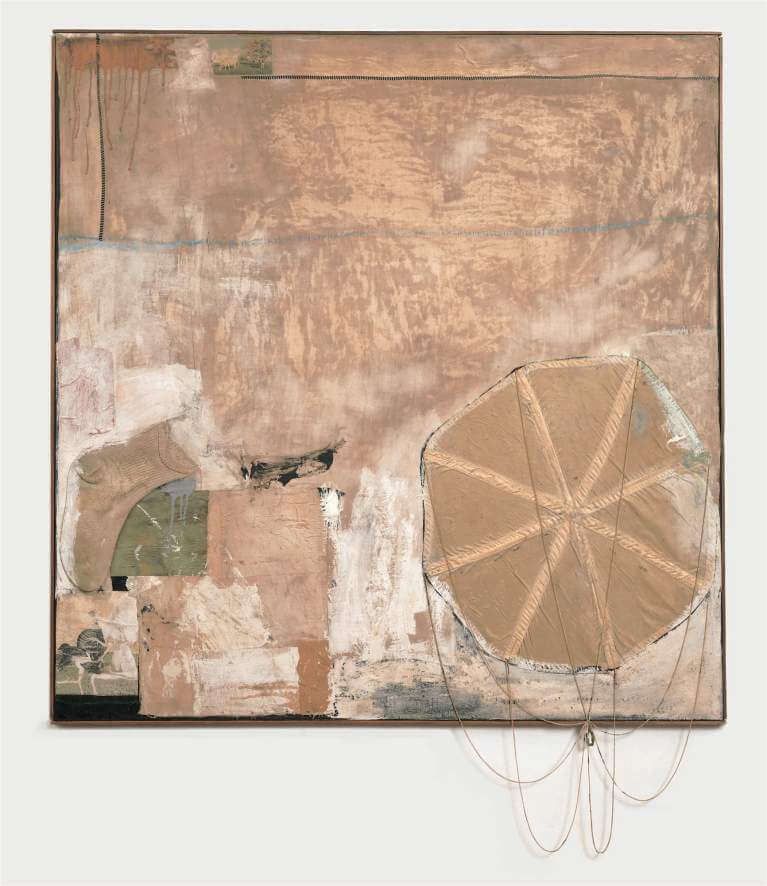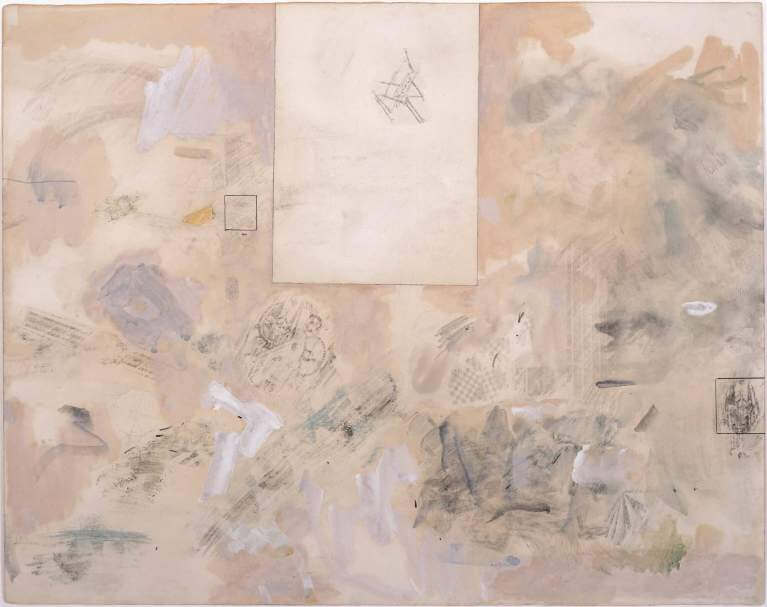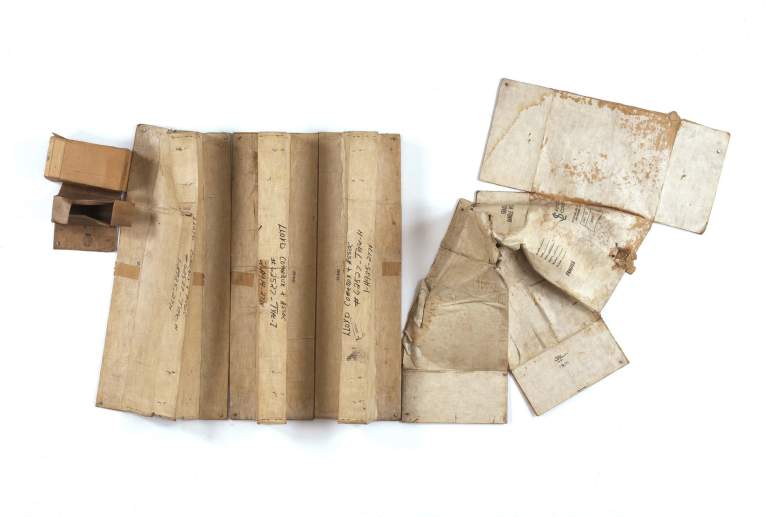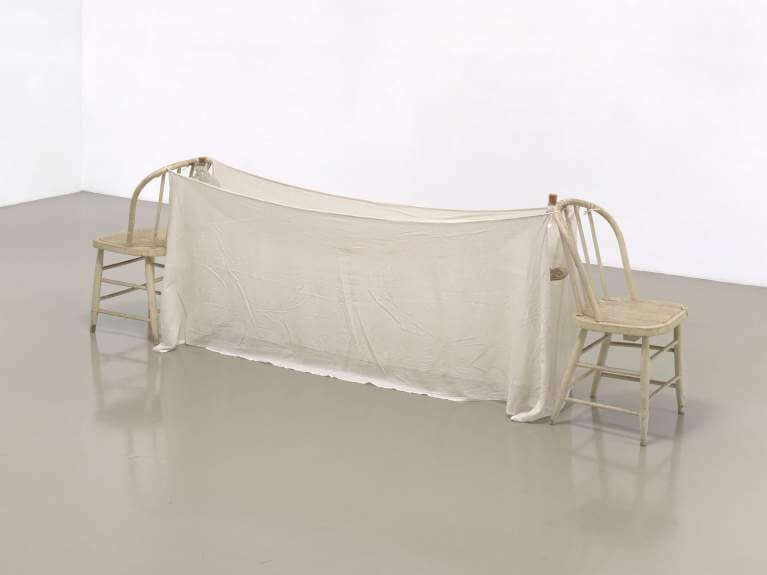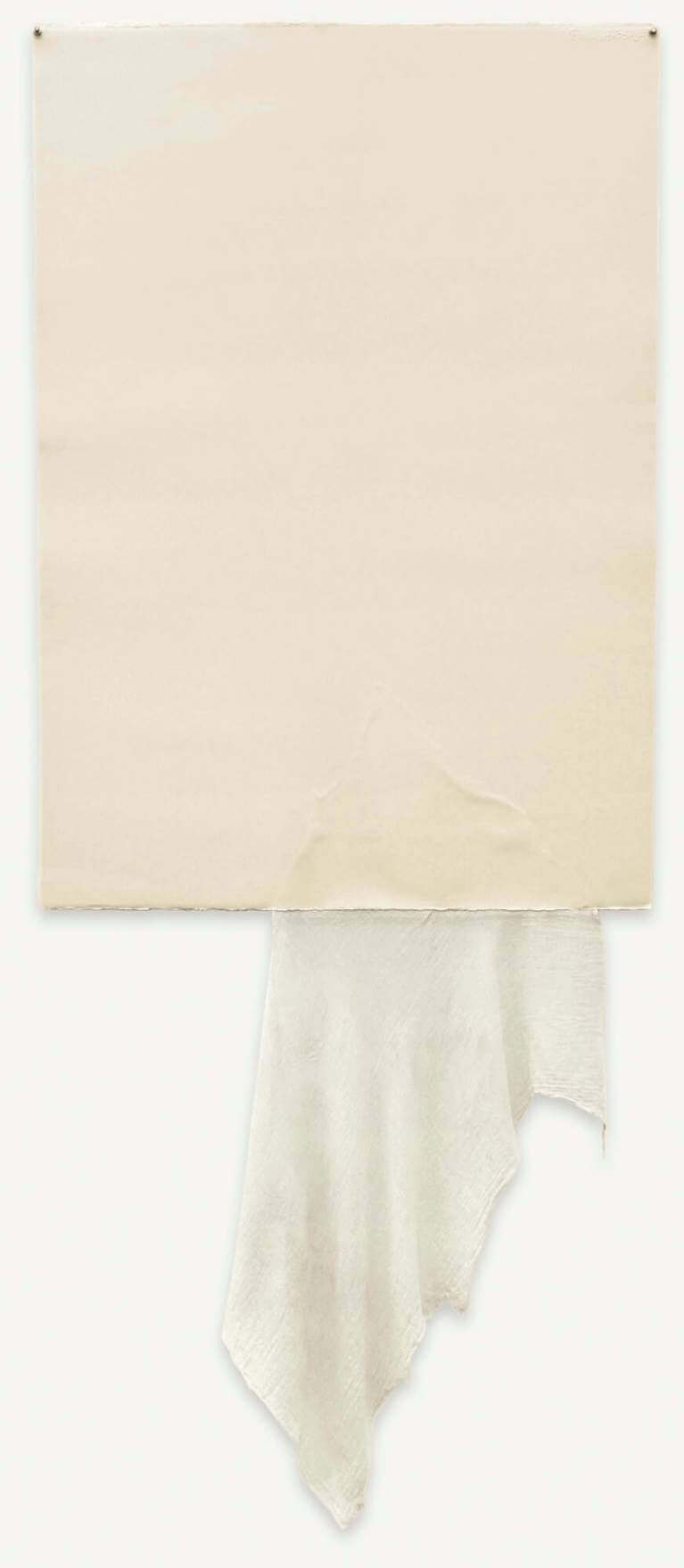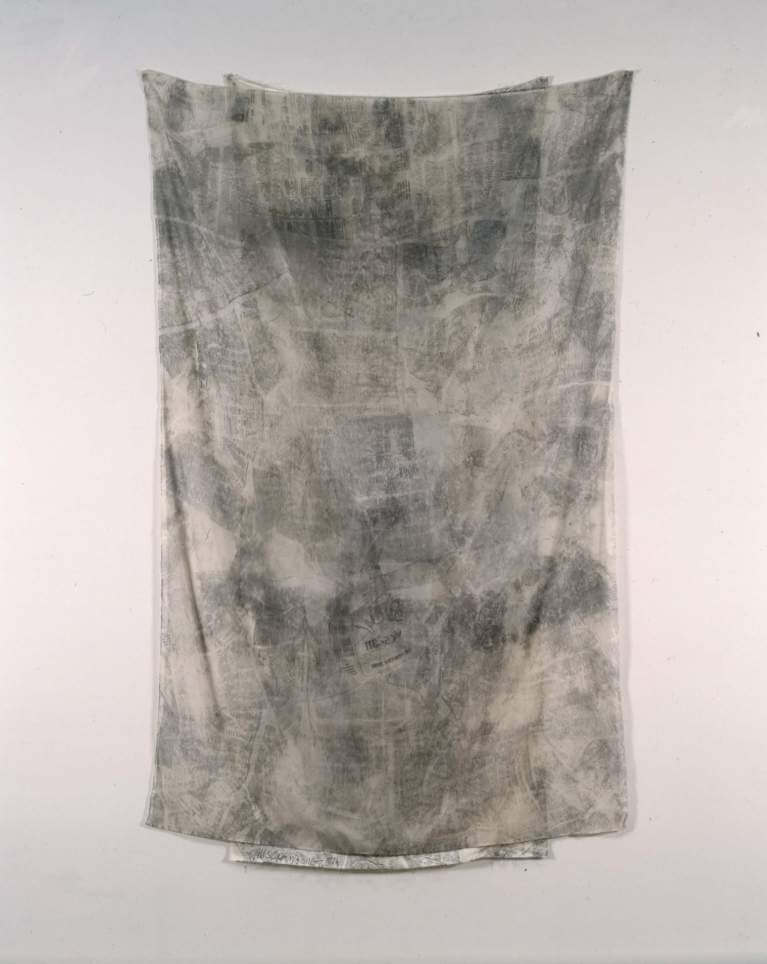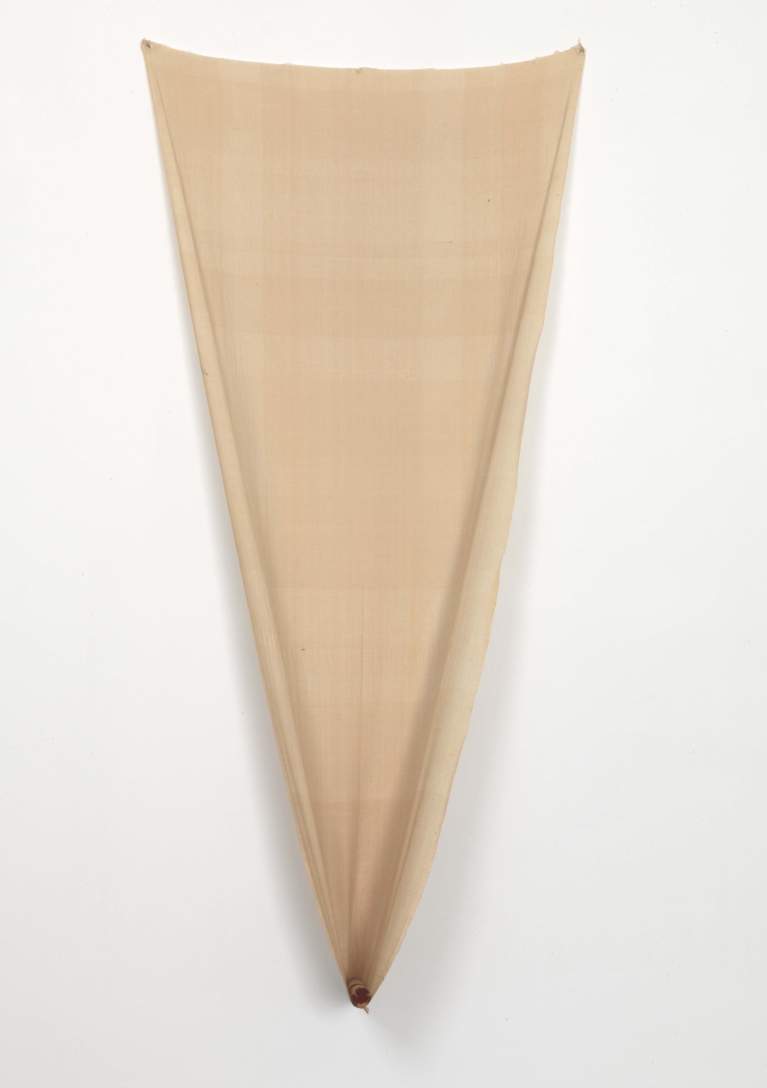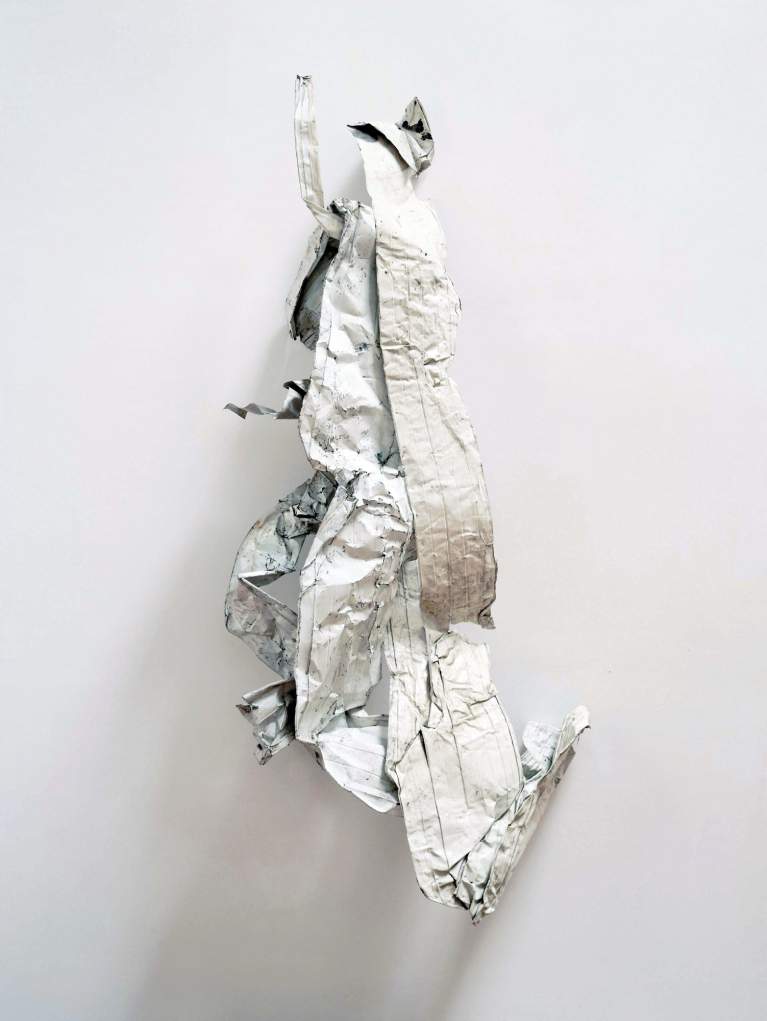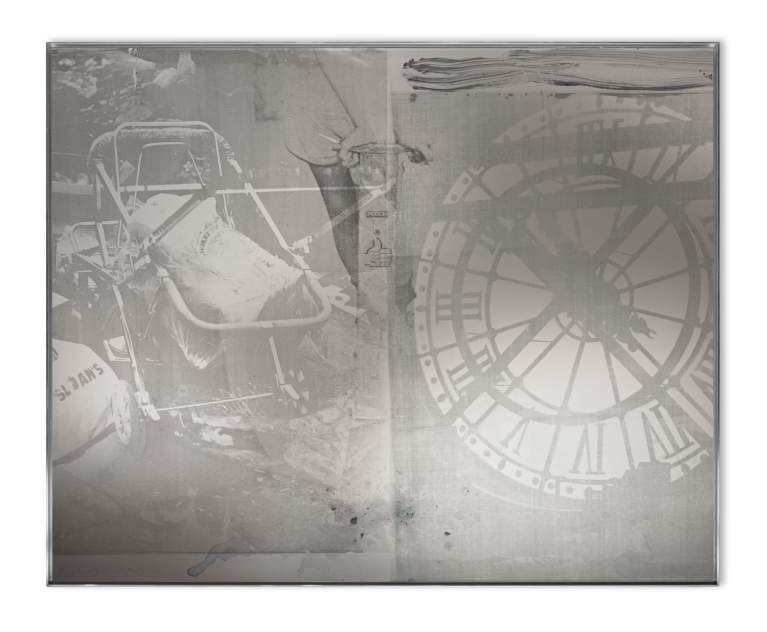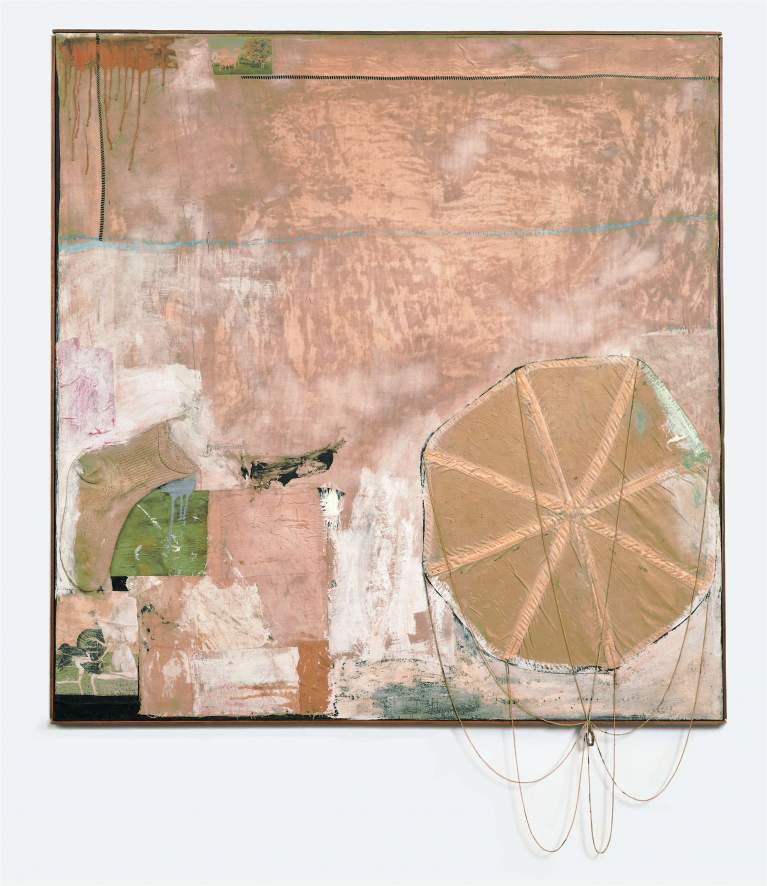
Untitled, ca. 1955
Tabula Rasa
1951
Mainly recognized as a brilliant colorist, Rauschenberg often retreated to “low” or “no” color when experimenting with a new medium. In a letter to art dealer Betty Parsons postmarked October 18, 1951, Rauschenberg described his White Painting series (1951) as taking “you to a place in painting art has not been . . . the plastic fullness of nothing.” His erasure of Willem de Kooning’s drawing two years later was interpreted by art historian Leo Steinberg as an Oedipal gesture of the young artist against the Abstract Expressionist paternal example. The resulting absence of color—and of line in this case as well—provided a tabula rasa (a blank slate) that would serve as a springboard for new developments in Rauschenberg’s art. Other times, the sapping of color offers a respite for the artist between or in the midst of a highly colored series, as for example with Vow (1976) from the Jammer series, which is made from undyed cotton; and imagery, as for example in Time Scan (1991) from the Phantom metal painting series, that is so pale and ghostly that it nearly disappears altogether.

